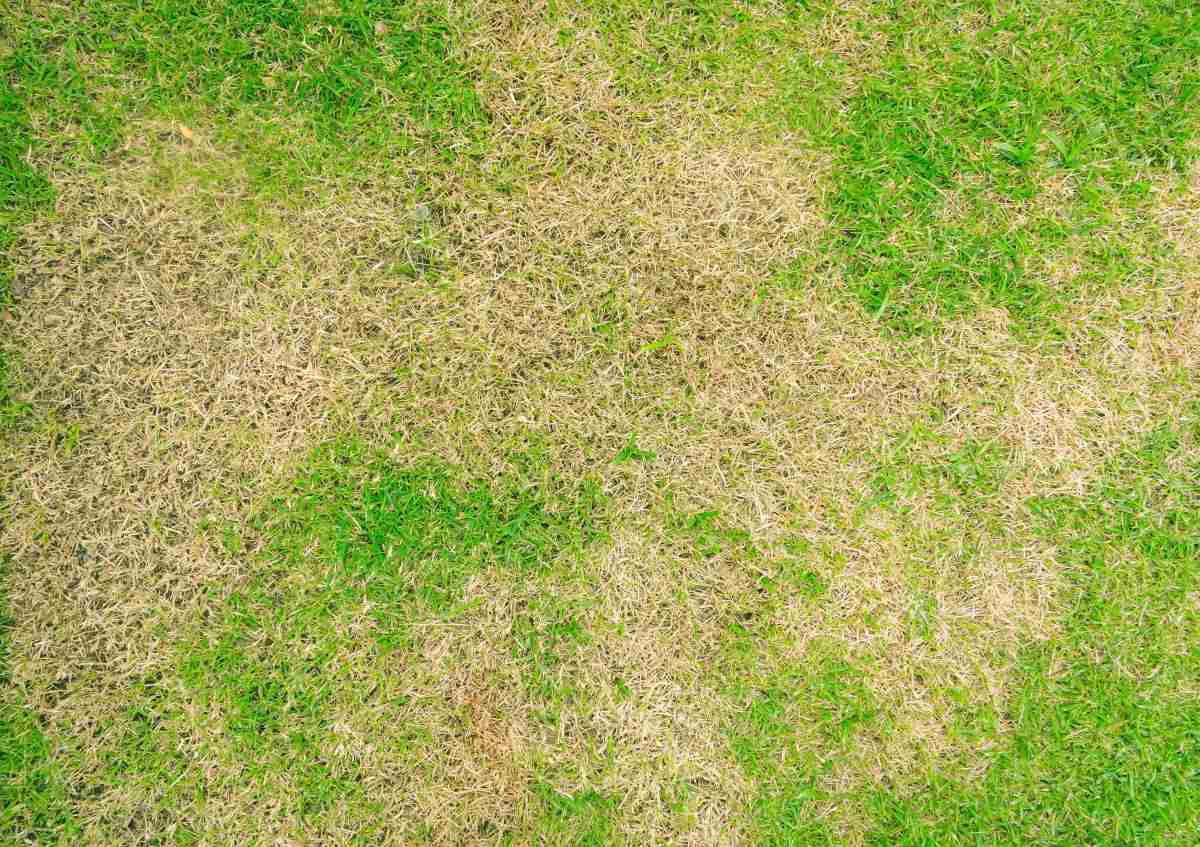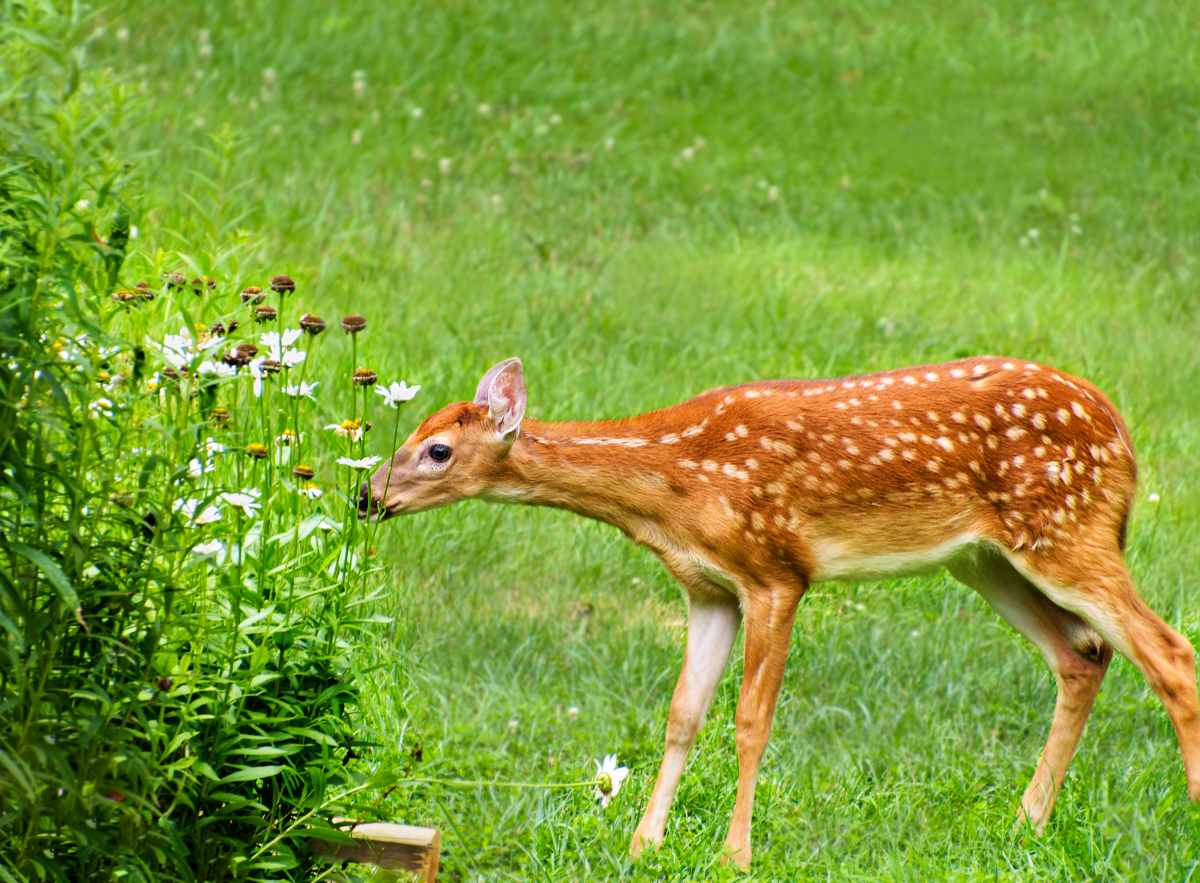
The best deer-resistant plants for Newark include trees like American Holly and pawpaw, shrubs like bearberry and red elderberry, groundcovers like little bluestem, ornamental grass like switchgrass, and more. Not only are the plants in this list deer resistant, but they can withstand Essex County’s freezing winters and humid, wet summers.
Take note of these because construction around Newark has forced deer to forage for food in local gardens. This guide is designed to help you select the best deer-resistant plants for your home. It is important to know that while there is no such thing as a “deer-proof” plant, deer seldom bother with these plants.
- American Holly (Ilex opaca)
- Northern Bayberry (Myrica Pennsylvanica)
- Bearberry (Arctostaphylos uva-ursi)
- Catmint (Nepeta)
- Blue False Indigo (Baptisia australis)
- Pawpaw (Asimina triloba)
- Red Elderberry (Sambucus racemosa)
- Switchgrass (Panicum virgatum)
- Tall Oregon Grape (Mahonia aquifolium)
- Whorled Tickseed (Coreopsis verticillata)
- Flowering Tobacco (Nicotiana alata)
- Little Bluestem (Schizachyrium scoparium)
- Wild Ginger (Asarum Canadense)
- Virginia Bluebells (Mertensia virginica)
- How to Choose the Best Deer-Resistant Plants for Newark
- FAQ About Deer-Resistant Plants for Newark
American Holly (Ilex opaca)
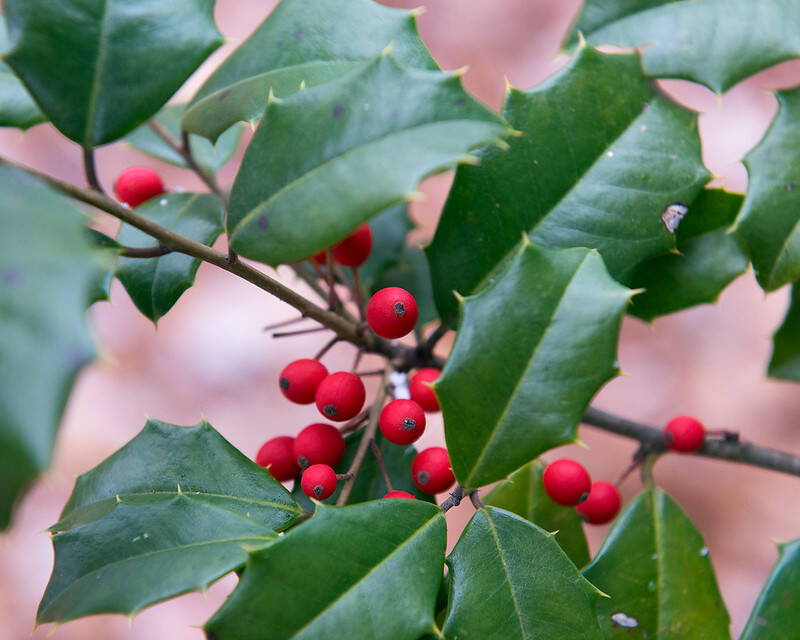
American Holly grows well in the mostly acidic soil typically found in New Jersey. Although it does not grow well in clay soil, if you have a silt-clay soil type, which is common in Newark, you can amend it.
The reason you may want to amend this type of soil is because clay soil is slow to absorb water and becomes compacted easily. Adding mulch and organic matter can enhance its quality. Find out more about soil composition and enhancements in our guide about soil types.
Homeowners love that American Holly‘s leaves remain green year-round – even in Newark’s cold and snowy winters. This beautiful tree blossoms small greenish flowers. When male and female trees are planted near one another, they produce red berries that stay around through the coldest months. Birds feast on the red treats throughout the winter.
- Plant type: Tree
- Hardiness zones: 5-9
- Sun: Full sun to partial shade
- Soil: Sand, loam, acidic, well-drained. Do not grow in clay.
- Duration: Evergreen perennial
- Water needs: Medium
- Mature height: Typically grows under 25 feet tall, but some can reach 50 feet or more.
Northern Bayberry (Myrica Pennsylvanica)

Northern bayberry adapts to many soil types. So, unlike the American Holly, Northern bayberry will tolerate soil with a silt-clay composition.
The humid, wet Newark summers are no problem for this shrub. It prefers moist soil and tolerates wet environments well. The glossy leaves are very fragrant when they are crushed. Yellowish-green flowers blossom, but they are not very eye-catching.
Add Northern bayberry to your yard for functionality. It helps mitigate the erosion that silty soils are prone to and is salt tolerant, so it can withstand overflows when you’re salting your icy sidewalks and driveways in the winter.
- Plant type: Shrub
- USDA Hardiness Zone: 4-6
- Sun: Full sun
- Soil: Sandy, rocky, acidic; well-drained with high organic matter
- Duration: Perennial
- Bloom time: Spring
- Water needs: Low; water regularly until established
- Mature height: 6-12 feet
Bearberry (Arctostaphylos uva-ursi)

Bearberry is a host plant for moth and butterfly caterpillars. The berry-looking fruit that ripens in the fall feeds wildlife – like birds – into the winter. Bees and hummingbirds are attracted to the nectar. Plant bearberry and watch its green leaves turn reddish-purple in autumn.
Bearberry is also functional; it can be used as a groundcover to help control erosion. Using groundcover is another way to amend silty soil and help reduce its severe vulnerability to erosion. This flowering groundcover will fill your yard with lovely pinkish-white flowers clustering on red stems from about April to May.
- Plant type: Evergreen shrub
- USDA hardiness zone: 2-6
- Sun: Full sun or partial shade
- Soil: Sandy, acidic; can be dry or moist but no standing water
- Duration: Perennial
- Bloom time: Early spring to early summer
- Water needs: Low
- Mature height: Up to 8 inches
Catmint (Nepeta)

This plant can bloom showy flowers of many colors, including white and pink. We’re partial to the vibrant and show-stopping lavender petals with a tinge of blue.
The green leaves understand that your sense of smell needs to be catered to as much as your visual sense, and the foliage is aromatic. That minty smell that we like so much is what keeps the deer and rabbits at bay. But no worries. Catmint serves a greater purpose – it gives back to the ecosystem by attracting beneficial insects like butterflies and bees.
- Plant type: Herbaceous perennial
- USDA Hardiness Zone: 3-9
- Sun: Full sun, partial shade
- Soil: Chalk, loam, sand
- Duration: Perennial
- Bloom time: May – September
- Water needs: Low
- Mature height: 1-3 feet
Blue False Indigo (Baptisia australis)

Blue false indigo is also called Blue wild indigo. It has flowers that stand on tall stems. The cluster of small purple petals bloom May through June, before Brick City’s hottest summer months. In addition to the tall blossoms standing atop blue-green leaves providing stunning visual excitement, the seed pods provide audio stimulation, rattling when shaken.
This perennial flower attracts butterflies and is a great addition to a pollinator garden.
- Plant type: Upright perennial
- USDA Hardiness Zone: 3-9
- Sun: Full sun
- Soil: Loam, Sand
- Duration: Perennial
- Bloom time: April – July
- Water needs: Low, Average
- Mature height: 3-4 feet
Pawpaw (Asimina triloba)

Pawpaw is a delicious shrub that can also grow into a tree. This plant not only feeds small mammals and birds, but it attracts butterflies and also feeds anyone willing to partake of its edible green fruit. The tree produces fruit after the flowers have bloomed in April to May. In the fall, the fruit ripens and turns brown.
The large green tropical-looking leaves easily add visual interest to any yard. Pawpaw is a great shrub or tree for a rain garden.
- Plant type: Tree
- USDA Hardiness Zone: 5-9
- Sun: Full sun, partial shade
- Soil: Loam
- Duration: Perennial
- Bloom time: April to May
- Water needs: Average
- Mature height: 15-30 feet
Red Elderberry (Sambucus racemosa)

Whether it’s the cluster of small white flowers or vibrant red berries that get your attention, red elderberry helps Gateway City homeowners feed and provide habitat to local wildlife. Native bees use the shrub for nesting. But be careful! Although the birds find the berries scrumptious, the fruit is poisonous to humans.
Having problems with insect pests in your garden? This perennial draws beneficial insects that feed on these pests. Plant red elderberry as a specimen tree or as a border plant.
- Plant type: Shrub
- Water needs: Medium 3-7
- Sun: Full sun or partial shade
- Soil: Moist and well-drained
- Duration: Perennial
- Bloom time: Spring and summer
- Water needs: Medium; water in the absence of rain
- Mature height: 3-9 feet
Switchgrass (Panicum virgatum)

It is best to test your soil before planting switchgrass. This ornamental grass needs sufficient nutrients, so potassium and phosphorous levels should be adequately maintained. Switchgrass prefers pH levels as close to 6.5 as possible, but it can withstand as low as 5.5.
Are you curious about your soil’s pH level and want to find out how to determine it? Read our article, “Why, When, and How to Test the Soil pH of Your Lawn.”
Switchgrass is a clumping grass that gives you color in Newark’s icy winters. The pinkish flowers can be seen in July and turn beige at the end of summer or a little before, and remain through February. Switchgrass feeds birds and is a host plant for some butterfly species as well as moth and butterfly caterpillars.
Use switchgrass as privacy borders or to hide undesirable things or areas of your yard.
- Plant type: Grass
- Water needs: Medium 5a-9b
- Sun: Full sun, partial shade
- Soil: Sandy, loamy, clay, limestone-based
- Duration: Perennial
- Bloom time: July through February
- Water needs: Medium
- Mature height: 3-6 feet
Tall Oregon Grape (Mahonia aquifolium)
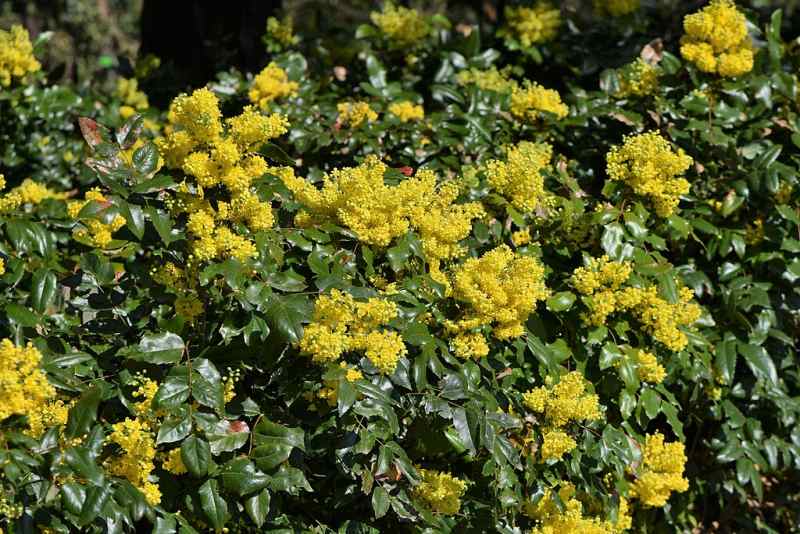
If you were thinking Oregon grape has edible fruit that resembles grapes, you are correct! The small treats are a bluish-black color and appear after the yellow flowers blossom in the spring. This shrub is also called hollyleaved barberry, because of its holly-looking foliage.
In addition to the tall Oregon grape being a human food source, it
also nourishes birds. The nectar beckons bees and other pollinators. Windy winters can be drying and not the best conditions for this shrub, so plant it in a location where it will not be exposed to drying winter gusts.
Use tall Oregon grape in a shade garden or as shrub borders, and make some jelly for your morning toast with the berries.
- Plant type: Shrub
- Hardiness zones: 5-8
- Sun: Partial shade to full shade
- Soil: Loam, acidic, well-drained
- Duration: Perennial
- Bloom time: Spring
- Water needs: Medium
- Mature height: 6-8 feet
Whorled Tickseed (Coreopsis verticillata)
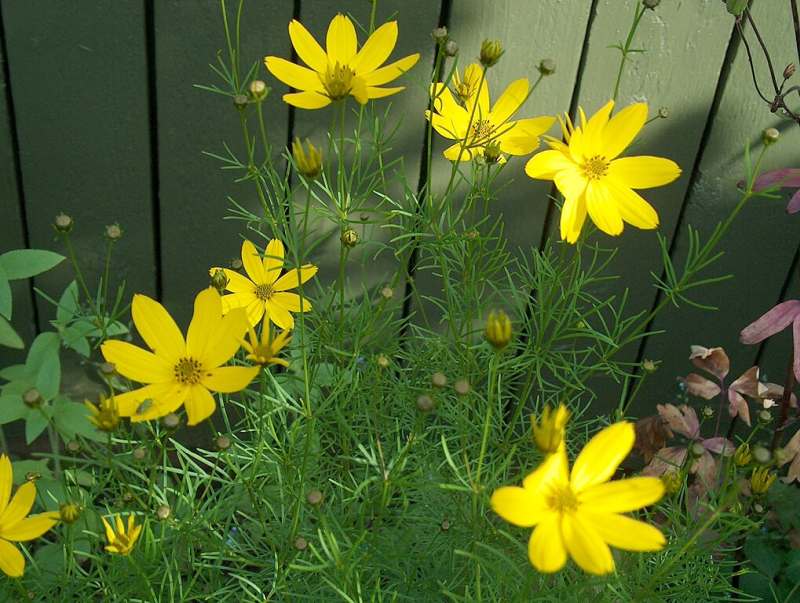
Whorled tickseed tolerates the humid Essex County summers well. The plant performs best in sandy as well as rocky soil that is infertile. This herb may droop in soil that is too wet or rich. But remember, you can always amend your soil to help your plants grow their best.
Don’t be surprised when you see this sunny flower. Its yellow petals remind you of daisies – as they should. Whorled tickseed is in the daisy family.
Plant this striking flower in a cottage, pollinator, or rock garden and you may hear the melodies of the songbirds as they come to eat the herb’s seeds. Pollinators, like butterflies, are attracted to the nectar.
- Plant type: Perennial herb
- USDA Hardiness Zone: 3-9
- Sun: Full sun
- Soil: Well-drained, moist soils.
- Duration: Perennial
- Bloom time: June – August
- Water needs: Low to Medium
- Mature height: 2-3 ft
Flowering Tobacco (Nicotiana alata)

This perennial is used and cultivated as an annual in Newark. It continues to add variety and color to your flower bed into the winter, as its flowers blossom from June to frost. Brighten your yard with these tubular-shaped petals that form points at the tips. You can find Flowering tobacco with red, green, white, yellow, and red blooms.
Plant this annual in a location where it will get full sun to partial shade. This flower attracts a variety of pollinators, including butterflies, bees, and hummingbirds. Flowering tobacco grows quickly. Plant it in a rock garden or use it as a container plant.
- Plant type: Annual
- USDA Hardiness Zone: 10-11
- Sun: Full sun to part shade
- Soil: Moist, organically rich, well-drained soil
- Duration: Perennial
- Bloom time: Summer to fall
- Water needs: Medium
- Mature height: 3-4 ft
Little Bluestem (Schizachyrium scoparium)

If you have the acidic soil type that is common in the Garden State, little bluestem will make a great addition to your yard. However, if you do not, one of the great things about this ornamental grass is that it grows in a variety of soil pH levels, from slightly acidic to alkaline. On the other hand, little bluestem is particular about its light requirements and needs full sun.
This colorful plant has blue and green foliage, with small flowers that bloom in late summer. Birds and butterflies are attracted to little bluestem, which makes an interesting ground cover. It also works well as a border or accent plant.
- Plant type: Ornamental grass
- USDA Hardiness Zone: 3-9
- Sun: Full sun
- Soil: Dry to moist, well-drained soils
- Duration: Perennial
- Bloom time: August – February
- Water needs: Low
- Mature height: 2-4 feet
Wild Ginger (Asarum Canadense)
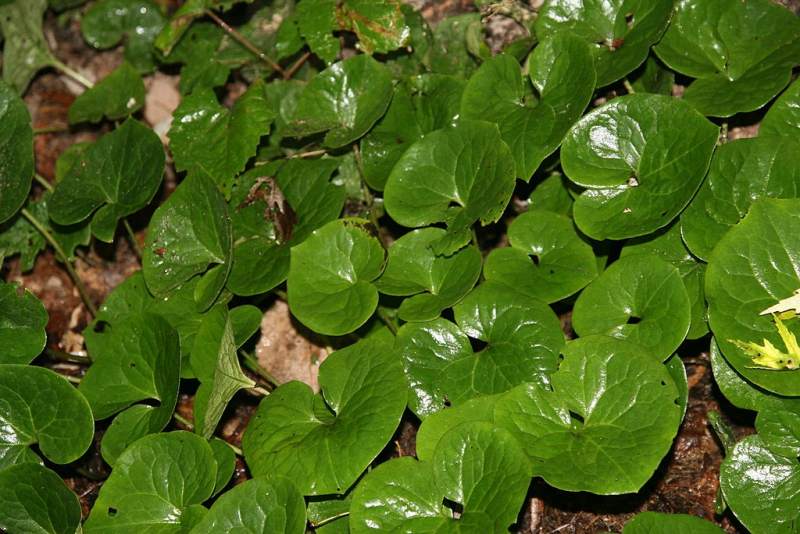
Wild ginger will bring all the ants to your yard, as they are the predominant disseminator of the plant’s seeds. But don’t let this discourage you. This plant is full of attractive heart-shaped leaves that provide a lush groundcover.
Wild ginger is considered both medicinal and edible. However, research this perennial before using it in either way.
For best results, lay down leaves as mulch to keep this plant in a moist environment and to enrich the soil. It only grows to about 1 foot, but that’s tall enough for the butterflies it attracts to find it. This herb is also a host plant for certain butterfly larvae.
- Plant type: Herb
- Hardiness zones: 4-6
- Sun: Partial shade to full shade
- Soil: Moist, organic-rich, acidic soil
- Duration: Perennial
- Bloom Time: April – June
- Water needs: Medium
- Mature height: Up to 8 ft
Virginia Bluebells (Mertensia virginica)

If you’re inviting wild ginger into your life, Virginia bluebells are a wonderful companion. They work well together in a native plant garden.
True to its name, Virginia bluebells have light blue flowers that hang downward and look like little bells. Although the bells do not make a sound, this plant beckons pollinators like hummingbirds, bees, and butterflies.
In the middle of summer, bluebells go dormant and the leaves wither. However, like wild ginger, bluebells make a great groundcover, especially in the spring. It’s also an ideal plant for a shade garden. Other perennials and plants like ferns will help your garden continue to look full after Virginia bluebells go dormant.
- Plant type: Herbaceous
- USDA Hardiness Zone: 3-8
- Sun: Part shade to full shade
- Soil: Chalk, clay, loam, sand. Acid, alkaline, neutral. Moist but well-drained
- Duration: Perennial
- Bloom time: Spring
- Water needs: Average. It does its best when moisture is abundant and will decline when the soil is too dry
- Mature height: 1-2 feet
How to Choose the Best Deer-Resistant Plants for Newark
Research plants to learn their preferences and what they can adapt to so that you choose vegetation that can thrive in your climatic conditions and your yard’s characteristics. If you need help, ask your local nursery.
Here are some things about your climate and property to consider:
Choose Plants with the Correct Deer Labels
Select plants characterized as “Rarely Damaged” and “Seldom Severely Damaged” by deer and that are native to your area or in your USDA hardiness zone.
If you choose plants labeled “Occasionally Severely Damaged” or “Frequently Severely Damaged,” provide extra security. Locate these plants inside fenced areas, or use deer-control methods, like repellents.
Test Your Soil
You want to know your soil type and pH level to choose plants that grow best in what you have, or to amend your soil.
Sunlight and Shade
Note how sunlight and shade are distributed throughout your property throughout the day. Choose plants that can thrive according to your yard’s sunlight and shadiness. Plant vegetation in areas of your yard that meet the flora’s preferences.
Water Distribution and Stagnation
If you have areas on your land that are waterlogged, only use plants that can withstand moist environments or flooding in those saturated locations.
If you have an irrigation system, grouping plants with watering needs can help you ensure floras get the right amount of moisture while you conserve water. So, choose deer-resistant plants with similar watering requirements as your current plants or vegetation that will thrive on the amount of water your property receives or retains.
Maintenance Preferences
Your maintenance preferences should not be ignored. Choose plants that have the amount of upkeep you’re comfortable providing.
Family Composition
If you have small children or pets, you may want to ensure you research to make sure plants are not toxic. While you can still choose floras with potential hazards, be sure to take precautions, like planting vegetation behind fences or hanging them in containers that are out of the reach of children and pets.
FAQ About Deer-Resistant Plants for Newark
Are perennials or annuals best?
Annuals are typically less expensive in the long run. They regrow for many years without replanting. This also makes them less work than perennials.
Although you have to replant perennials annually, they allow you to change your garden every year. You can have a new color scheme or modify your flower bed in other creative ways with the best perennials for your New Jersey home.
What plants are invasive in Newark?
These are some examples of plants that should not be planted in your home landscape because they are invasive:
- English Ivy (Hedera helix)
- Norway maple (Acer platanoides)
- Japanese Meadowsweet (Spiraea japonica)
- Japanese Barberry (Berberis thunbergii)
- Winged Burning Bush (Euonymus alatus)
When To Call a Pro
Selecting plants can be fun. But choosing plants that will thrive in your yard’s environmental characteristics, work well with your property’s layout, look good together, are in your USDA hardiness zone, and are deer resistant, takes a bit of work. We have confidence that you can do it. However, after you’ve done all of that, you still have the work and sweat of planting the floras and maintaining them.
Lawn Starter experts can do all of this and more. Let us connect you with landscaping and lawn care pros to help you with your garden and lawn care needs, including managing the most common lawn weeds in New Jersey and keeping your lawn looking immaculate.
Main Photo Credit: KQ Ferris / Adobe Stock Free / License

